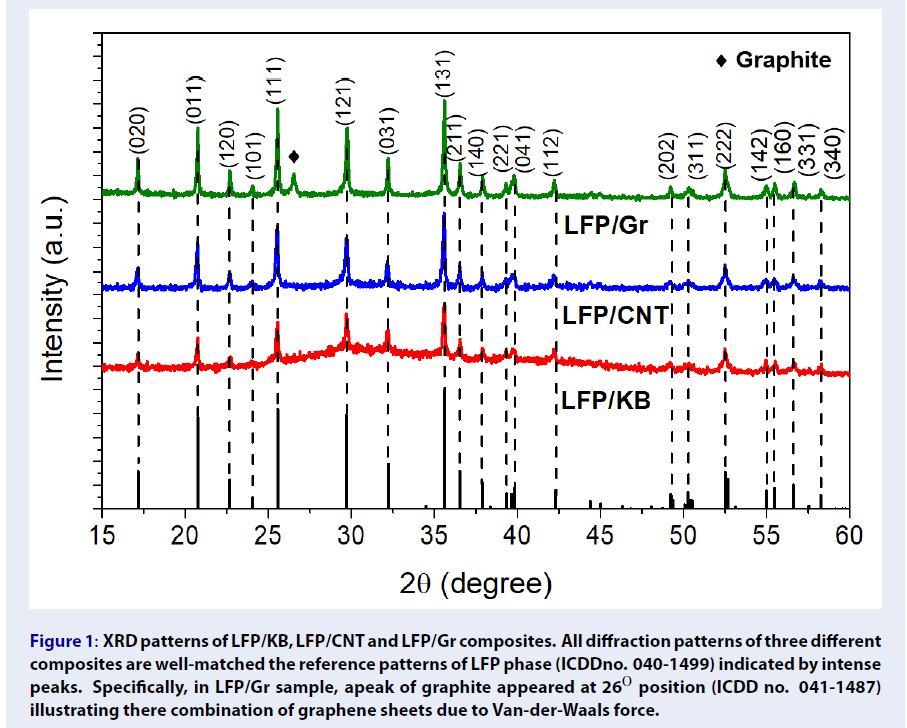
The impact of carbon additives on lithium ion diffusion kinetic of LiFePO4/C composites
- University of Technology, Vietnam National University-Ho Chi Minh City, 268 Ly Thuong Kiet street, Ward 14, District 10, Ho Chi Minh City, Viet Nam
- Graduate University of Science & Technology – VAST, Viet Nam
- Vinh Long University of Technology Education (VLUTE), Viet Nam
- University of Science, Vietnam National University- Ho Chi Minh City, 227 Nguyen Van Cu street, Ward 4, District 5, Ho Chi Minh City, Viet Nam
Abstract
Introduction: LiFePO4/C composites were synthesized via physical mixing assisted solvothermal process. Different kinds of carbon materials were investigated including 0D (carbon Ketjen black), 1D (carbon nanotubes) and 2D (graphene) materials. X-rays diffraction patterns of carbon coated LiFePO4 synthesized by solvothermal was indexed to pure crystalline phase without the emergence of second phase. LiFePO4 platelets and rods were in range size of 80-200 nm and dispersed well in carbon matrix. The lithium ion diffusion kinetics was evaluated through the calculated diffusion coefficients to explore the impact of carbon mixing.
Methods: In this work, we studied the structure, morphologies and the lithium ion diffusion kinetic of LiFePO4/C composites for Li-ion batteries. Different characterization methods were used including powder X-rays (for crystalline structure); Transmission Electron Microscopy (for particle and morphologies observation) and Cyclic voltammetry (for electrochemical kinetic study).
Results: The study indicated LiFePO4/C composites were successfully obtained by mixing process and the electrochemical performance throughout the calculated diffusion coefficient was significantly improved by adding the carbon types.
Conclusion: The excellent ion diffusion was obtained for composites LiFePO4/Ketjen black (KB) and LiFePO4/CNT compared to LiFePO4/Graphene. KB could be a potential candidate for large-scale production due to low-cost, stable and high electrochemical performance.

